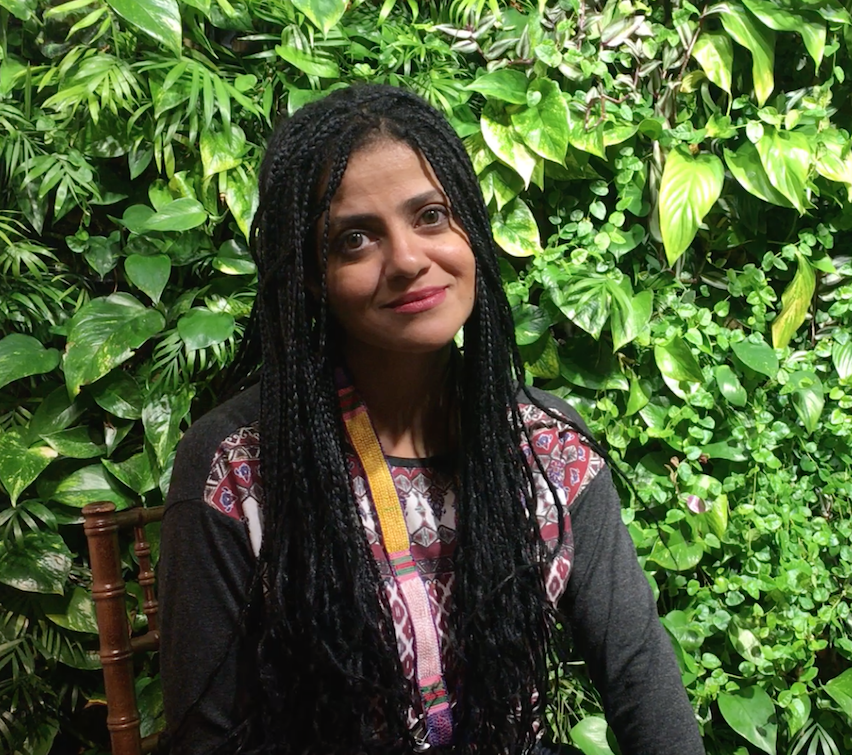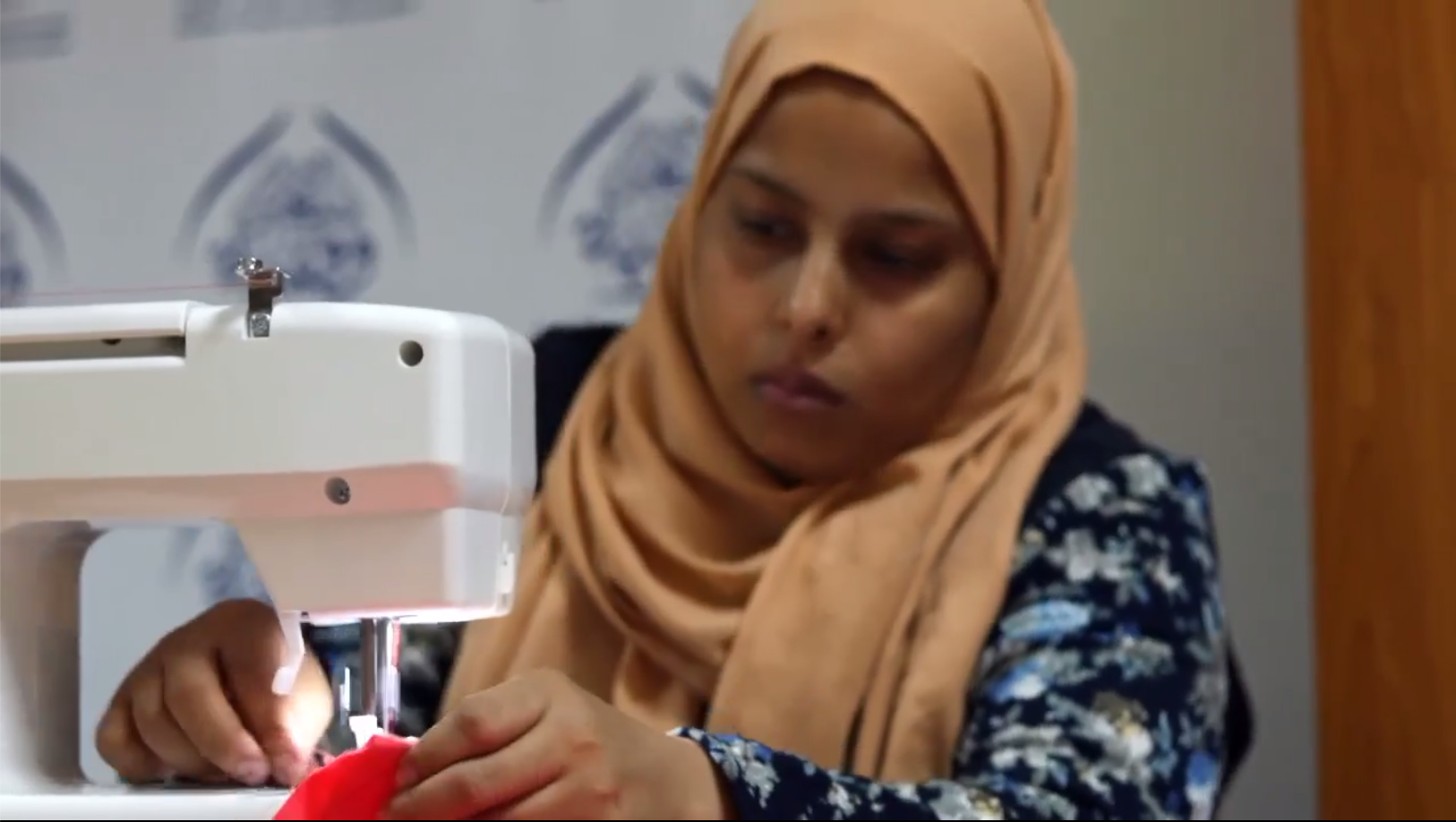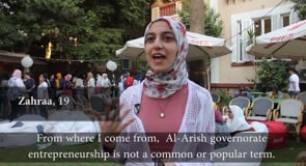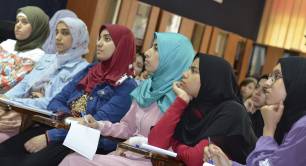Waqf for the modern age: the Cairo foundation reviving Islamic tradition for sustainable development
In Egypt, a community foundation is attempting to create sustainable social impact through a longstanding but part-forgotten Islamic tradition – and discovering its own sustainable business model on the way. Our Young Storymaker Nour Ibrahim reports from Cairo.
Maadi is an area of Cairo that is home to some of the richest but also some of the poorest people in the Egyptian capital. Maadi resident and academic Marwa El Daly wanted to bridge that gap, so in 2007 she started Waqfeyat Al Maadi Community Foundation (WMCF). Like many other organisations she wanted to help women and youth in the community – but unlike many other charitable initiatives, El Daly’s dream was to build a hub based on the ancient yet largely forgotten Islamic tradition of waqf.
The Arabic word waqf actually translates as ‘detention’ or ‘bringing to a standstill’. The legal consultant and scholar Hamid Harasani defines it as “the imprisonment of capital and liquefaction of benefit.”
In other words, waqf is a form of endowment, where the asset or substance of the waqf is held by an organisation and all its generated revenues are committed to a cause. This can be done through the endowment of one’s property in favour of a person or a cause, or the allocation of wealth (through donations) for a specific cause. The initial sum remains preserved while its revenues are spent so that a bigger, more long-term impact is created.
|
How a waqf works A waqf is a form of endowment, where the asset or substance of the waqf is held by an organisation and all its generated revenues are committed to a cause. It involves three parties: the waqif who creates the waqf, the mawquf allayh is the beneficiary and the mutawalli is the handler who administers the waqf based on the waqif’s conditions. How does it work in practice? For example, a building may be subject to waqf whereby the landlord would still own it but the collected rent would be dedicated to a certain cause, or they might rent it out for free to certain tenants. The waqf could continue even after the landlord’s death. As the value of the original capital (the building in this case) is retained (ie the endowment itself is not spent and the building cannot be sold), the impact of a waqf can be much longer term than, for instance, a charity that raises and then spends any donations. Similarly, instead of donations being spent on immediate necessities like food, waqf funds would be invested strategically so that their returns would help individuals with education or tools and equipment so they can generate their own income. |
Misunderstood and overlooked
In past centuries, the waqf was a building block of the Islamic public sector. For example, in the Journal of Islamic Economics Science, Nurwinsyah Rohmaningtyas and Sri Herianingrum explain that waqf in the first years of Islam was used to empower the community, educate young people and ensure food and shelter. But nowadays, it is perceived differently.
“Research has shown that the majority of the Egyptian population do not know what waqf means and 30% mistakenly thought it meant government-owned property,” explains El Daly, who is also an adjunct professor at the American University in Cairo where she teaches philanthropy and nonprofit management.
The majority of the Egyptian population do not know what waqf means – 30% thought it meant government-owned property
As regulators attempted to systematise the waqf, Egyptians grew more and more confused over the concept and its origin.
 “The waqf system got nationalised and a ministry was set up, namely the Ministry of Awqaf [the plural form of waqf]. This meant that anyone who made a waqf would do it with the government and the system was no longer as decentralised,” El Daly (pictured) says.
“The waqf system got nationalised and a ministry was set up, namely the Ministry of Awqaf [the plural form of waqf]. This meant that anyone who made a waqf would do it with the government and the system was no longer as decentralised,” El Daly (pictured) says.
In addition to that, the waqf has had to compete with other philanthropy outlets since both rely heavily on generous donations. While many charity organisations master the art of fundraising and can use donations to finance this and to expand their reach, their campaign objectives are often less specific and sometimes address beneficiaries’ short-term needs. Funds received for waqf, meanwhile, can only be used as per the original donors’ intent and aim to create a more lasting impact on the beneficiaries’ lives.
Shifting mindsets
El Daly has fought to revive the waqf, because she believes the approach offers empowerment, dignity and sustainability in comparison to some charity alternatives.
“Already calling it ‘Waqfeyat El-Maadi’ was the first accomplishment because there was no such thing as a ‘Waqfeya’ [an organisation that manages the waqf] under the organisations’ law,” she says. “We broke the ice by using a name that had never been used before.”
We broke the ice by using a name that had never been used before
Later on, her organisation even contributed to a constitutional amendment, lobbying for Article 90 of Egypt’s 2014 constitution. This now says that the State shall encourage the charitable endowment system, notably to sponsor cultural, health and social institutions, and shall ensure their independence.
“This is very important because you want to work on something so you need the relevant policies,” El Daly says – noting, however, that further legislation to effectively regulate the waqf process is still needed.
With limited marketing budgets or access to philanthropists, the foundation had to typically rely on those in the community who knew and trusted them to donate and establish waqfs that would support the rest of the community.
El Daly recalls: “At the beginning, it was harder, we had to exert more effort to convince philanthropists. With time, and when people saw it for themselves, this is what really made a difference.”
Covid campaign
With the outbreak of Covid-19 in Cairo reaching its worst point in April 2020 and coinciding with Ramadan – when charity donations typically peak – an opportunity arose for WMFC.
While NGOs prepared food packages and companies provided temporary support initiatives, WMCF's team examined the situation with a longer-term perspective. They realised that workers were being let go, or advised to stay home for their safety, when they had no alternative source of dignified income and food donations could not sustain them in the long run.
 Right away, the team kicked off a social media challenge to encourage philanthropic-minded individuals to start a waqf, dedicated to the informal daily labourers. Donations supported a labourer or a family by helping them start their own mini project, doing anything from sewing to welding – anything that beneficiaries proposed that was feasible and for which they had the skills or commitment. WMFC trained the labourers and provided them with equipment and sometimes the materials to kickstart the project.
Right away, the team kicked off a social media challenge to encourage philanthropic-minded individuals to start a waqf, dedicated to the informal daily labourers. Donations supported a labourer or a family by helping them start their own mini project, doing anything from sewing to welding – anything that beneficiaries proposed that was feasible and for which they had the skills or commitment. WMFC trained the labourers and provided them with equipment and sometimes the materials to kickstart the project.
A video produced as part of the social media challenge (see English version here) went viral, says El Daly. “We had 100,000 views in no time and we found that so many people wanted to participate.” This included not only donors but also labourers who could now benefit from their help.
We found that so many people wanted to participate
As the numbers of those in need increased, and those initially needing help returned again for assistance, philanthropists also started to consider the long-term impact of their contributions and were more willing to consider waqf as a more sustainable alternative to other forms of donations, according to El Daly.
WMCF acted as the mutawalli (administrator), facilitating the entire process from collecting the funds, selecting the beneficiaries, providing them with the equipment and materials needed, and ensuring payment upon sale.
And with the success of the social media challenge, WMCF expanded its role and started marketing people’s products. As big businesses like malls, hotels, hospitals and even banks and celebrities showed interest in the campaign, orders started coming in for things like decorative items, bed sheets and medical garments.
What about WCMF's own future? It is likely to include more new projects and partnerships, El Daly says, but will remain committed to the Islamic tradition from which it was born. “We are going down this path, without losing our identity as an organisation with a heart for the community.”
- Read more about how WCMF teamed up with UK-based NGO YouthBank International, with support from the British Council's DICE programme, to help nuture young entrepreneurs.
Images: Women supported by Waqfeyat Al Maadi Community Foundation (credit WCMF); Marwa El Daly (credit: Nour Ibrahim)
Nour Ibrahim is a DICE Young Storymaker – one of fourteen young journalists recruited by Pioneers Post and the British Council from six countries to report on social and creative enterprise. Explore their stories from the UK, Pakistan, Brazil, South Africa, Egypt and Indonesia here.





